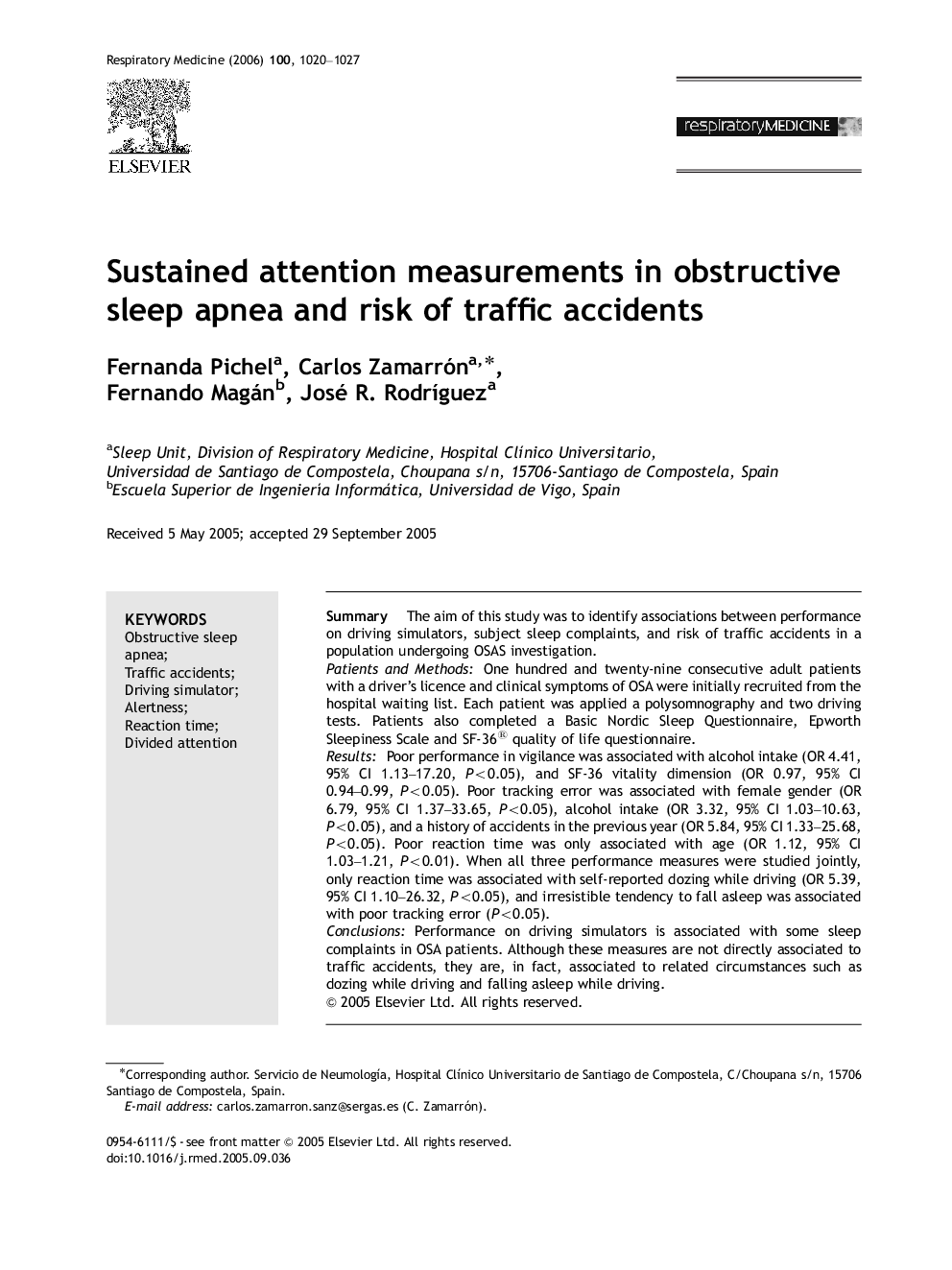| Article ID | Journal | Published Year | Pages | File Type |
|---|---|---|---|---|
| 4212093 | Respiratory Medicine | 2006 | 8 Pages |
SummaryThe aim of this study was to identify associations between performance on driving simulators, subject sleep complaints, and risk of traffic accidents in a population undergoing OSAS investigation.Patients and MethodsOne hundred and twenty-nine consecutive adult patients with a driver's licence and clinical symptoms of OSA were initially recruited from the hospital waiting list. Each patient was applied a polysomnography and two driving tests. Patients also completed a Basic Nordic Sleep Questionnaire, Epworth Sleepiness Scale and SF-36® quality of life questionnaire.ResultsPoor performance in vigilance was associated with alcohol intake (OR 4.41, 95% CI 1.13–17.20, P<0.05), and SF-36 vitality dimension (OR 0.97, 95% CI 0.94–0.99, P<0.05). Poor tracking error was associated with female gender (OR 6.79, 95% CI 1.37–33.65, P<0.05), alcohol intake (OR 3.32, 95% CI 1.03–10.63, P<0.05), and a history of accidents in the previous year (OR 5.84, 95% CI 1.33–25.68, P<0.05). Poor reaction time was only associated with age (OR 1.12, 95% CI 1.03–1.21, P<0.01). When all three performance measures were studied jointly, only reaction time was associated with self-reported dozing while driving (OR 5.39, 95% CI 1.10–26.32, P<0.05), and irresistible tendency to fall asleep was associated with poor tracking error (P<0.05).ConclusionsPerformance on driving simulators is associated with some sleep complaints in OSA patients. Although these measures are not directly associated to traffic accidents, they are, in fact, associated to related circumstances such as dozing while driving and falling asleep while driving.
